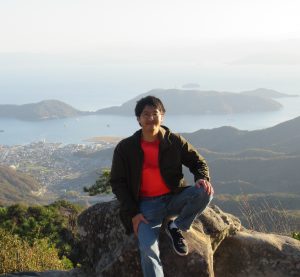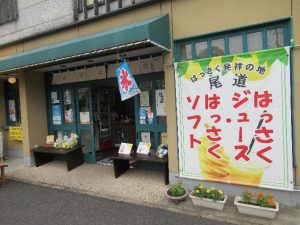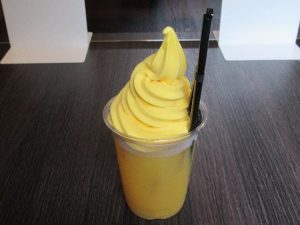100 Stories
Summer in Onomichi: Letting My Worries Drift Away
Much as I love living and working in Hiroshima, I’d be a liar if I said that nobody in this city rubs me the wrong way. Whether it’s a stranger, a co-worker, or even one of my travel buddies, there are times when people’s behavior may reasonably or unreasonably vex me. Whenever that happens, I take it as a sign that everyday life in Hiroshima is getting to me, and that I need to chill out with a trip out of town. Hiroshima Prefecture is not lacking in smaller towns, and since it was mid-July and the rainy season was just about over, I opted for the coastal city of Onomichi, where temples abound and views of the Seto Inland Sea let people unwind.
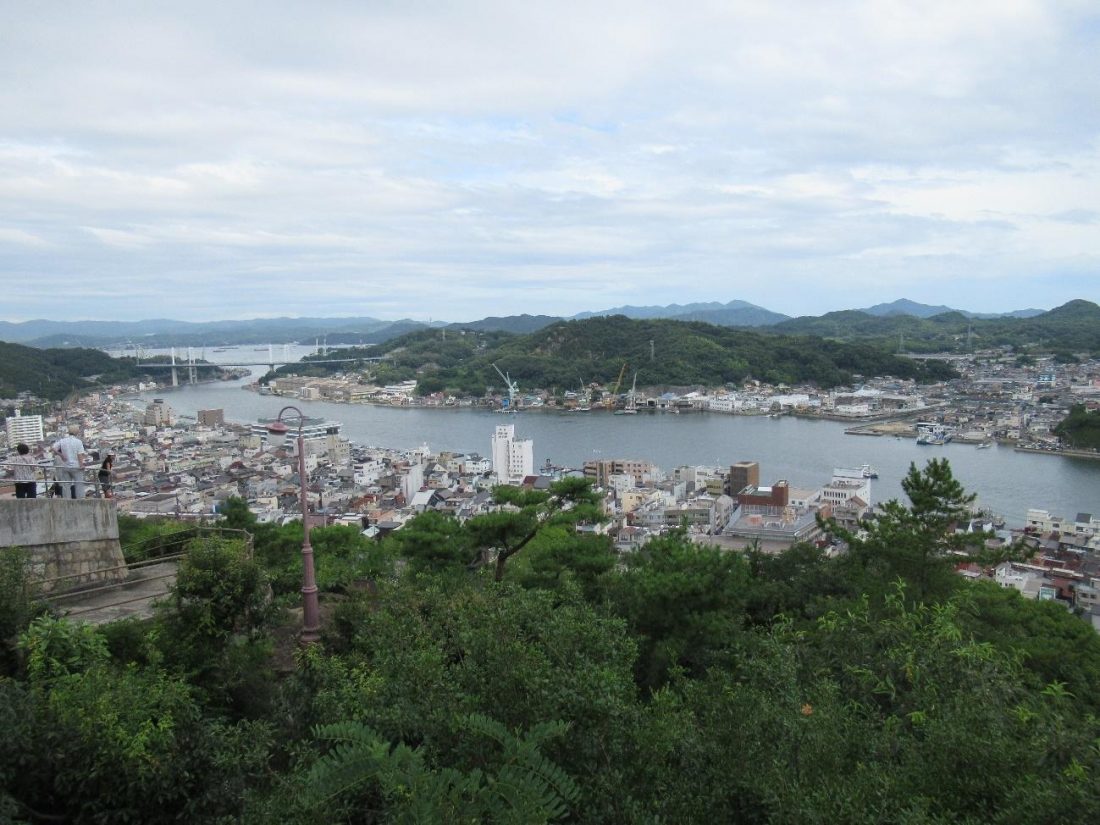
A couple days prior, I was feeling some stress from work and personal relationships, some of which lingered into the weekend. I almost didn’t want to go, but I convinced myself that this day trip would be good for me. Those who visit Onomichi via public transport can either take the bus from the Hiroshima Bus Center or get on the Green Sanyo Line at Hiroshima Station. As I rode the train all the way to Onomichi Station, my mood was still somewhat negative, but I had faith that Onomichi would turn my frown upside down. This wasn’t the first time visiting, and if this trip was like the ones before, I was sure to have a good time there.
The Ascent
I stepped out of Onomichi Station with only an ounce of motivation, but I crossed the street towards the two seated statues and turned left, following the signs to Onomichi’s covered shopping streets. I soon found myself on Onomichi Hondori, a shopping arcade filled on either side with old-fashioned stores and modernized, trendy establishments, all of which coexist peacefully without taking away from the overall atmosphere. Here, visitors can find clothes stores, music stores, trendy cafés, and restaurants dishing up the well-renowned Onomichi ramen with its unique, fishy broth.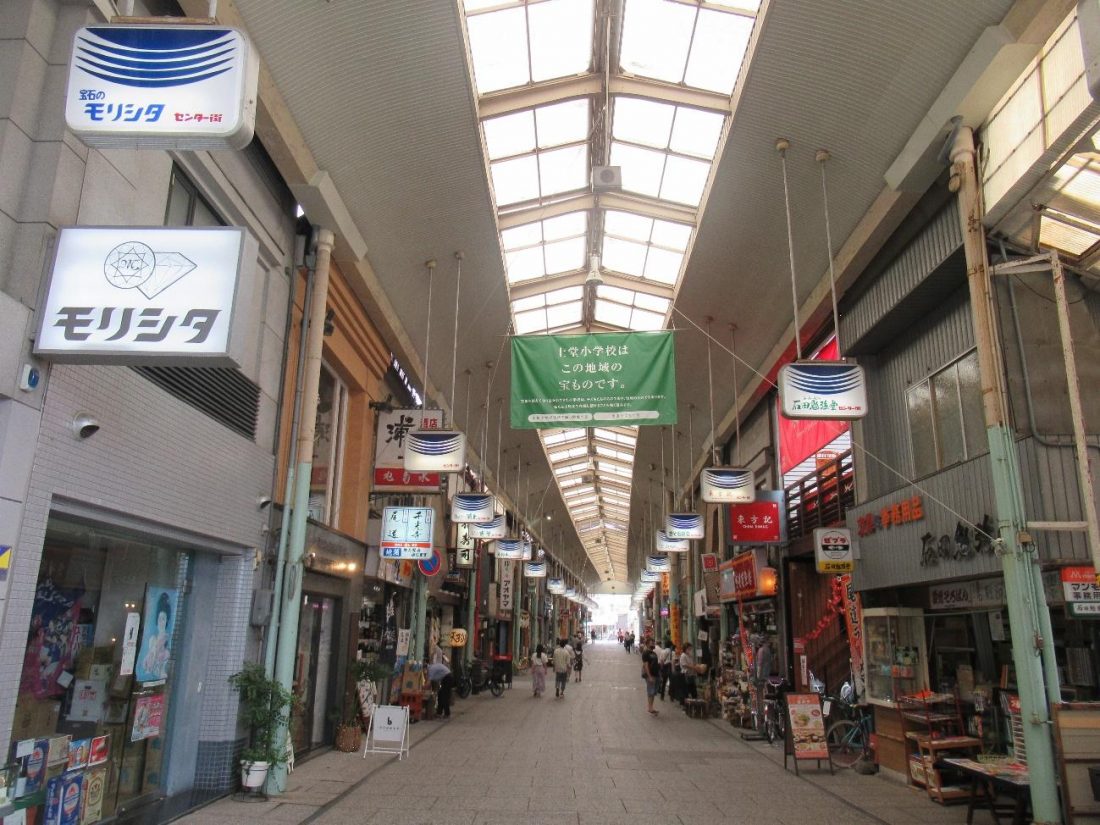
At the end of the arcade, I stepped out of one canopy and shortly into another, this one belonging to Onomichi Enomachi-dori, similar in style to Onomichi Hondori. All the while, I looked left and right, contemplating where I could have lunch later and which café to hit up for some tea and dessert. Eventually, I came upon a sign telling me to turn left towards a ropeway station that would take me up to Onomichi’s most famous temple, Senkoji.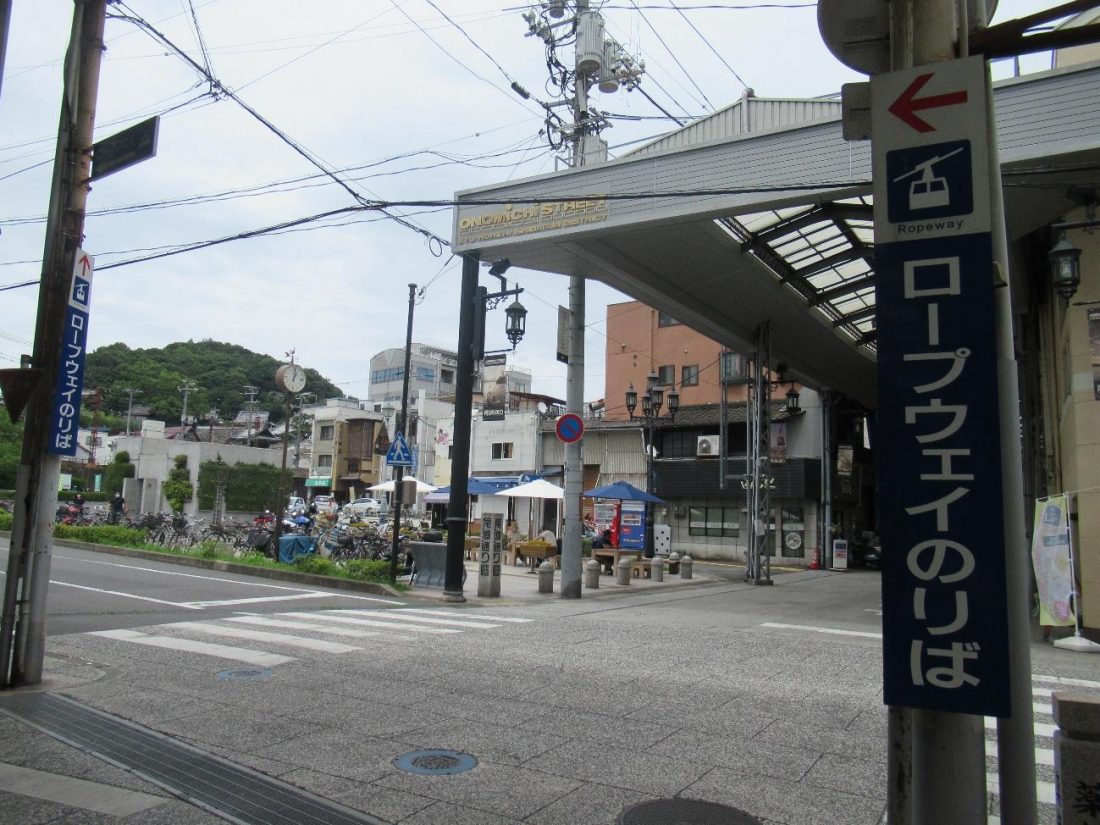
When I got to the ticket counter for the ropeway, I was told that the observation deck at the top had been demolished and that a new one was currently being built. As if that wasn’t enough of a mood killer, I looked up at the cloudy sky and wondered if it would rain soon. I backed away from the ticket counter to weigh my options and search for a place to enjoy a drink or a snack, but soon after I left, rain started to fall. I ducked into the nearest souvenir store and ordered myself a Hassaku orange juice float topped with Hassaku soft serve ice cream. With my plans put on hold by the rain outside, this float would have to act as my lunch, so I savored my tart ice cream and bittersweet juice at a leisurely pace.
As fate would have it, the sun came out exactly when I finished my float, so I returned to the ropeway station and bought a one-way ticket up to Senkoji. The ropeway runs every fifteen minutes and provides an excellent view of Senkoji about halfway up the hill, even swinging rather close to the temple structures. Under normal circumstances, there would be an observation deck at the top that affords a panoramic vista of the Seto Inland Sea, but for now, I’d have to make due with the views I get as I walk down the hill.
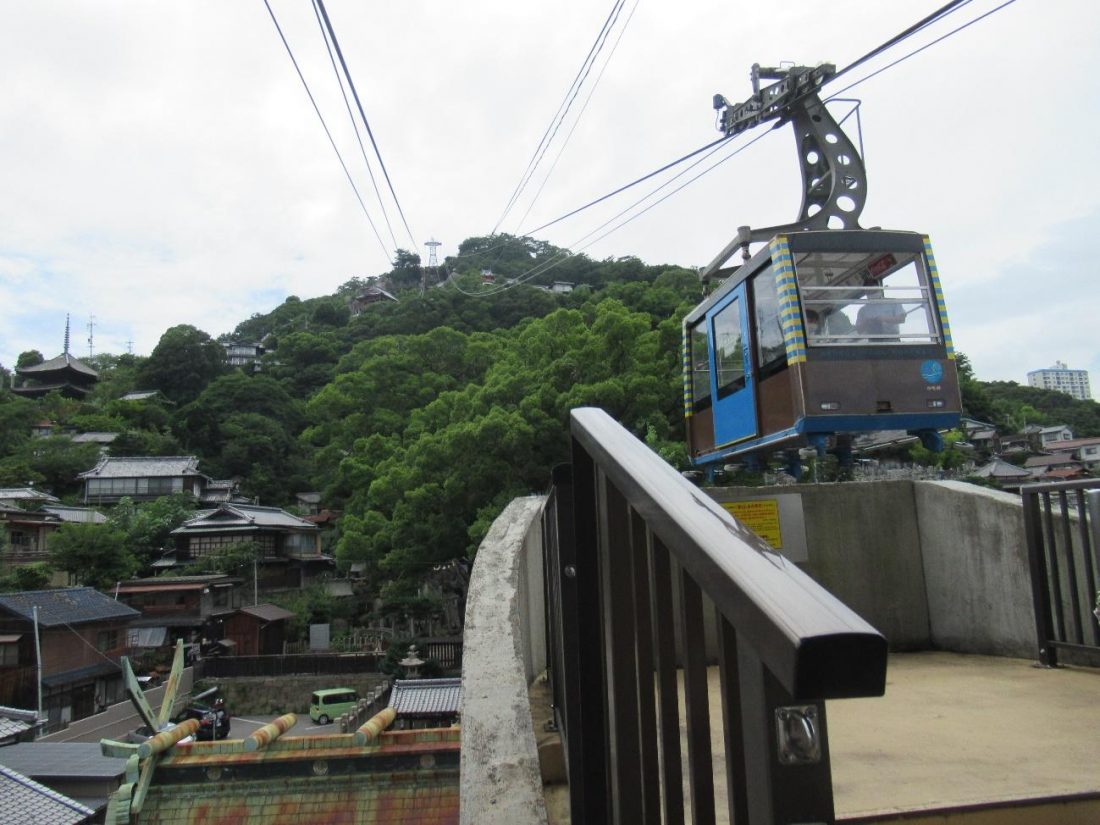
The Descent
Onomichi is a cat city, with strays and pets chilling every which way one looks. When the gondola reached the top and I stepped out of the station, one of the first sights to greet me was a napping cat, which drew the attention of everyone who passed by. This one had an owner, as it sported a green scarf around its neck, and a man by the door was replacing its water dish on a regular basis. I watched it sleep for a few minutes until it awoke, yawned, and changed positions. I figured I’d better leave this furry feline to nap in peace and began my descent towards Senkoji.

As I descended the stairs, I looked up and to my right where the observation deck would be and instead found an empty lot blocked off by barriers. That area will be inaccessible until some time next year, and I’m looking forward to what the new observation deck will look like, but for the time being, all I could do was take an alternate route down the hill. I turned right and came upon the Onomichi City Museum of Art, a tourist made viral by two cats, Ken and Go, who are always refused entry by the security guard, even though the cats themselves have been featured in the exhibits before. Oddly enough, the special exhibit during the time a went was a photo collection of baby cats (but not Ken and Go), and although I was tempted to go in and see, I had already lost precious time on account of the rain and decided to prioritize Senkoji, so down the slope I continued. I also passed by a restaurant called Petit Anon, with seats that command a mesmerizing view of Onomichi City, but I opted to hold out on the sweets until I was back in town.
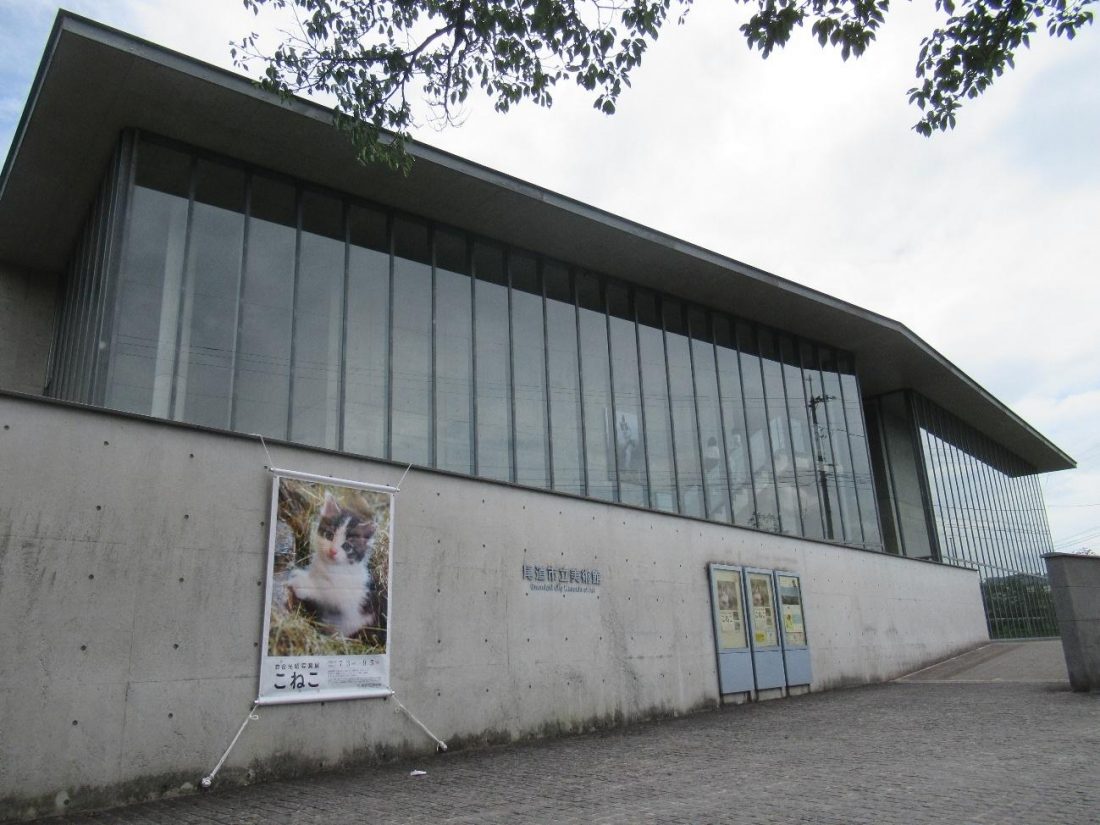
The incline on the hill is kind of steep, but it’s definitely harder on the body going up than it is going down. There’s a stretch right before Senkoji where tourists can stop and marvel at the maritime vista (pictured up top), with countless boats and islands dotting the horizon. There are some other noteworthy sites on the hill itself, like trees that blossom with pink flowers in the spring, and carvings featuring excerpts from esteemed Japanese authors. In spite of that, I had a one-track mind that took me straight to Senkoji’s temple grounds, where one particular prayer hall rightfully attracts a handful of tourists.
Moment of Joy: Don’t Hate, Meditate
What’s unique about the first prayer hall when coming up on Senkoji is that it has a chain of wooden beads before the doors and alms box. After putting some money into the alms box, worshippers put their hands together, bow, and chant, “Namu Daiji Daihi Kanzeon Bosatsu,” three times, before pulling the chain of beads slowly for about one cycle (use the one red bead to keep track), putting their hands together to bow once again, and approaching the main hall.
Something magical happened while I was pulling the beads, like all my negative emotions flowing down the metaphorical creek and leaving my mind pure and peaceful. It was at this point that my spirits were lifted to my normal vacation levels, and I could truly enjoy my Onomichi day trip.
Senkoji’s Facilities
As I stated earlier, that first prayer hall was just the start of my Senkoji tour, and the temple grounds have a lot more that warrant exploring. Besides the main hall, there’s also a separate path that leads to a most interesting physical trial. When climbing the stairs towards the main hall, make a detour up the left staircase to reach some immense boulders with chains hanging down. There used to be two sets of these chains, but now only one remains; this was the path used by female worshippers in the past. Just pay the fee and you too can take part in the rigorous trial to the top, and what’s more, this temple even accepts digital money!
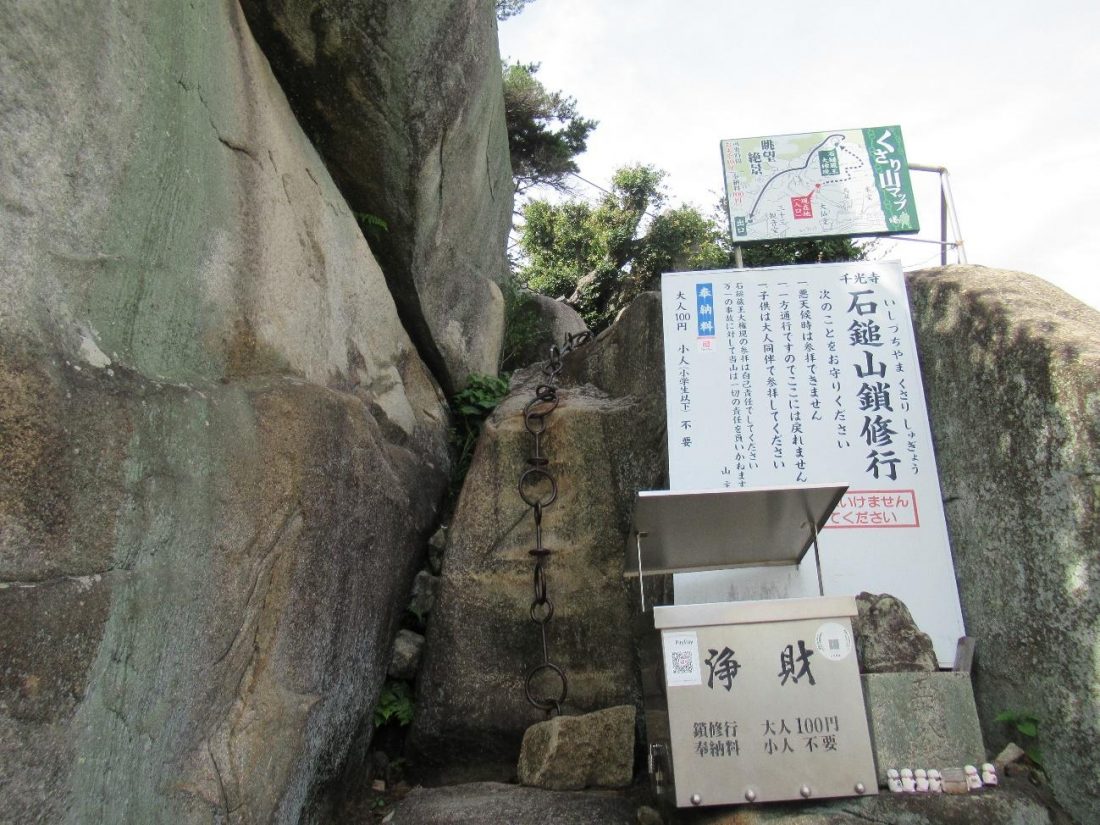
The climb is straightforward, but when I was hanging onto the chain, I sometimes swiveled to the left and right, causing my elbows to scrape against the rough boulders. I sustained no injuries, but would-be climbers should know what they’re getting into lest they get any scratches or bruises. Human feet fit perfectly into the rings or on the discs between rings, so falling shouldn’t be an issue. Those who brave the trial of the temple chains will be rewarded with this stunning view of Onomichi and the Seto Inland Sea.
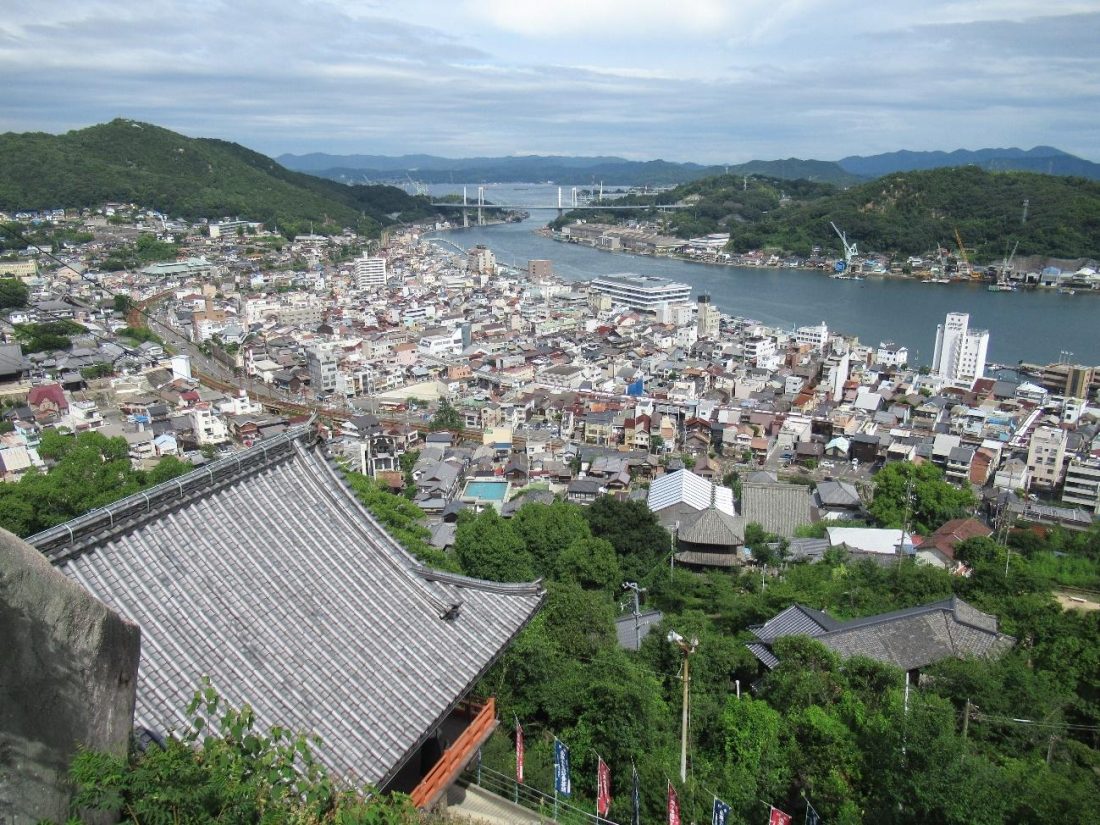
After marveling at this wondrous sight for a full minute, I made my way down the boulders via a back road until I caught sight of something and hatched a plan crazy enough to work. Rather than step all the way down onto the footpath, if I could jump from the boulder where I was to an even bigger one on the opposite side of the footpath, I could potentially access what is normally considered to be an inaccessible area. I set my backpack on a separate boulder, took a leap of faith, and caught onto the boulder on the other side. As I proceeded to climb it, I realized that my sneakers weren’t exactly cut out for this sort of thing, so it was a slippery ordeal and I honestly thought I was going to fall off. Somehow, I managed to scramble to the top of that boulder and jump off onto the foundation of one of the towers that supports the ropeway. Sure enough, in due time, a gondola passed right over my head, and I was able to snap a cool photo of its descent up close.
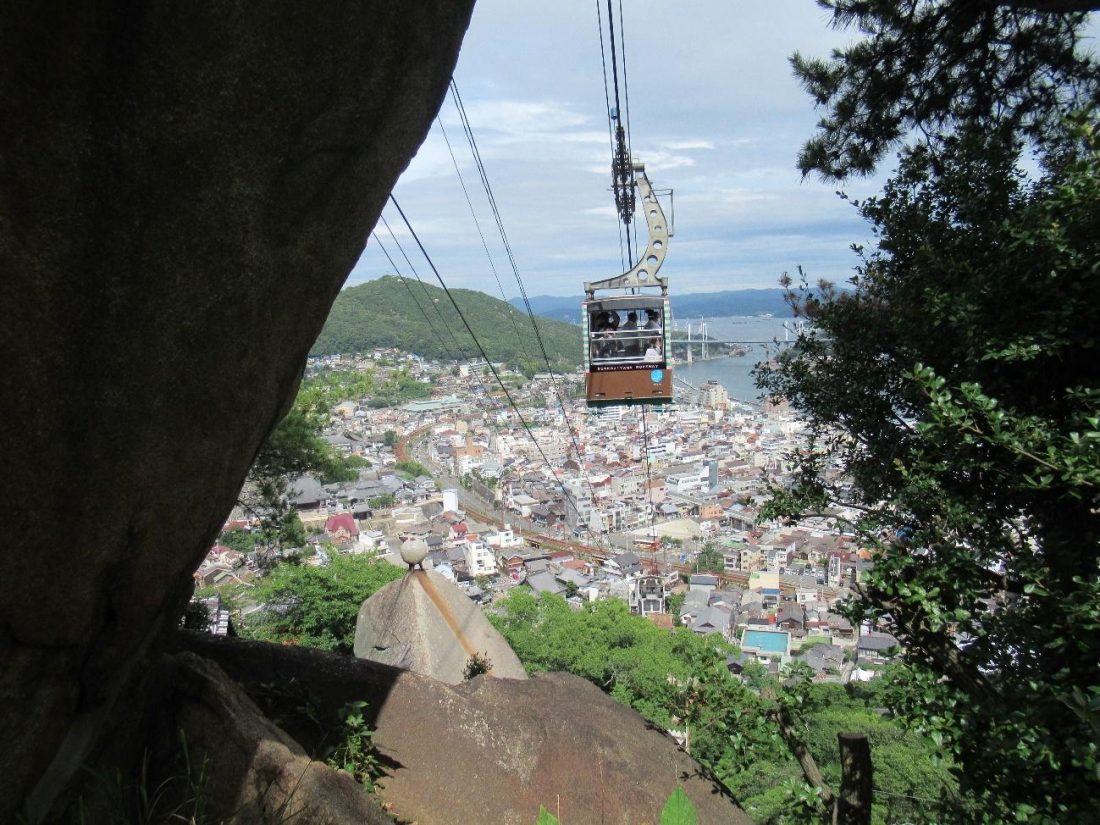
I jumped back down onto the regular footpath, grabbed my backpack, and continued on the trail, through a graveyard and back to the temple entrance. Of course, I went back to check out the main hall, filled with the aroma of incense and customers buying lucky charms from the store. The main hall itself has a platform for gazing down on Onomichi, but in my opinion, the Goma Hall sports an even better view, where the ropeway gondola also swings a little dangerously close. At this point in time, however, I could feel my hunger pangs telling me to go back to town for a snack, so I promptly bid farewell to Senkoji.
Romantic Tea Time
As I continued down the hill, I encountered a site that’s recommended by travel guides and websites as a must-snap photo opportunity. This is the three-storied pagoda of Tenneiji, another Buddhist temple that visually represents Onomichi as a travel destination. I snapped my photo, then took the path on the left that wraps around the pagoda.
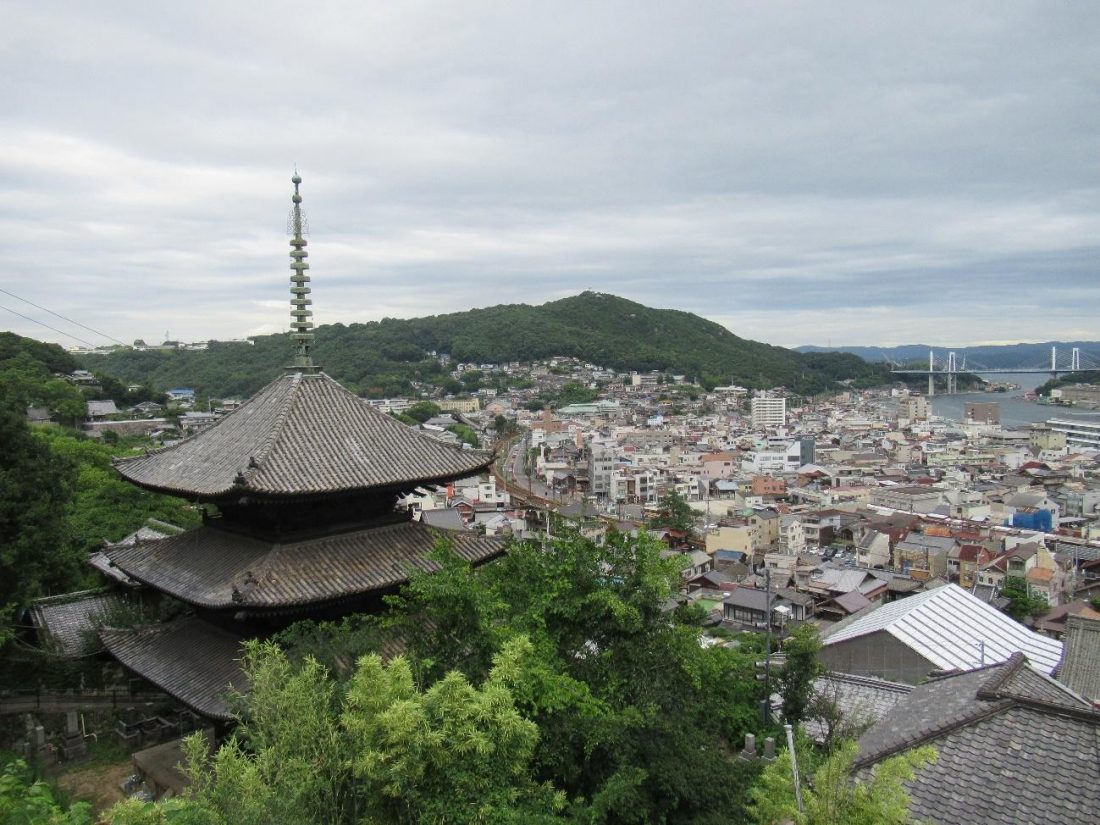
Just a few paces after walking around the pagoda of Tenneiji, I saw a sign pointing in the direction of Cat Alley to the left. As the name suggests, this is a narrow street where the bulk of the local cats reside, but in addition to these docile felines, there are also many hip cafés and painted rocks that resemble cute, elliptical cat statues. There are well over a hundred of them scattered throughout Cat Alley, so travelers with a lot of time on their hands can try to find them all. Unfortunately, I was not one of those travelers, so I walked through to the end of Cat Alley until I ended up back by the ropeway station at street level.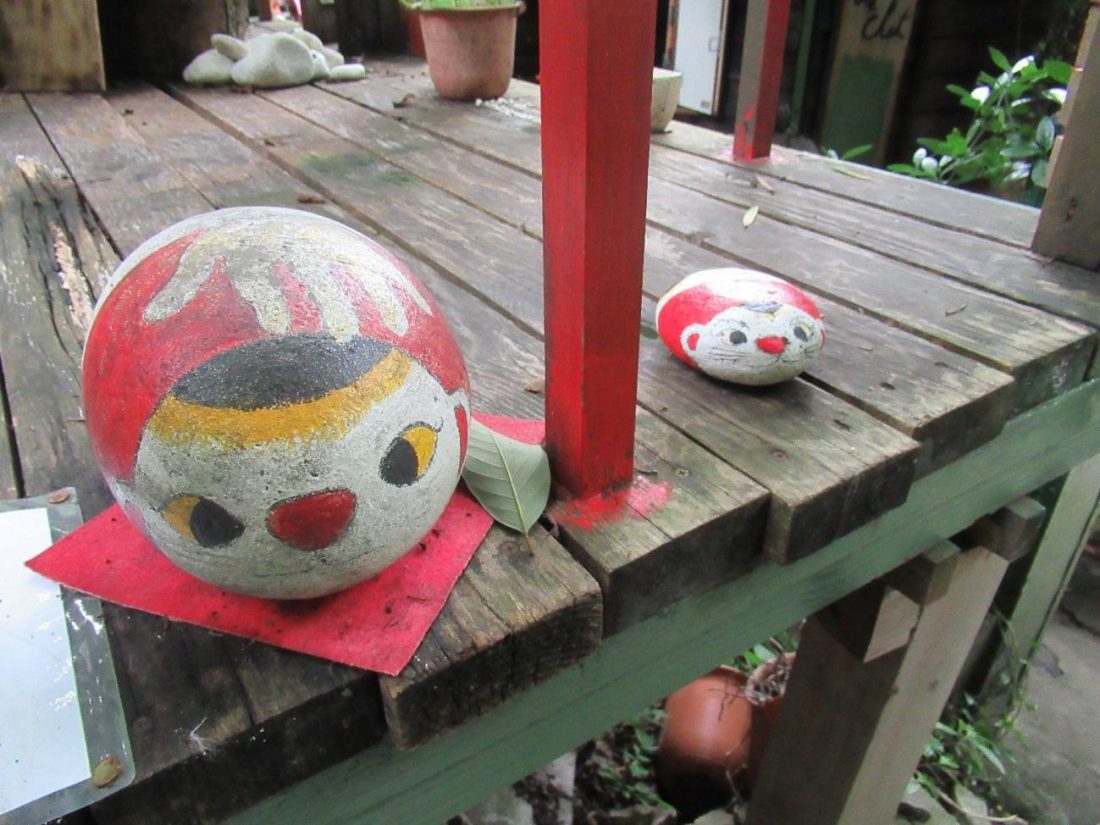
Back in town, I decided on a café called Onomichi Roman Coffee for a snack and a drink. The old-timey exterior and appealing fake food in the window drew me in, but the fancy interior and snazzy uniforms of the staff impressed me even more. The fare in general is rather light since it’s just a café, but I got myself a plate of waffles accompanied with some fresh fruit and vanilla ice cream, which would be more than enough, and ordered a milk tea to wash it all down. When my tea was served, the waitress first brought an empty glass with ice cubes in it, and then poured hot black tea from a separate beaker-like glass into mine. I poured my milk and sugar syrup in, mixed well, and dug in.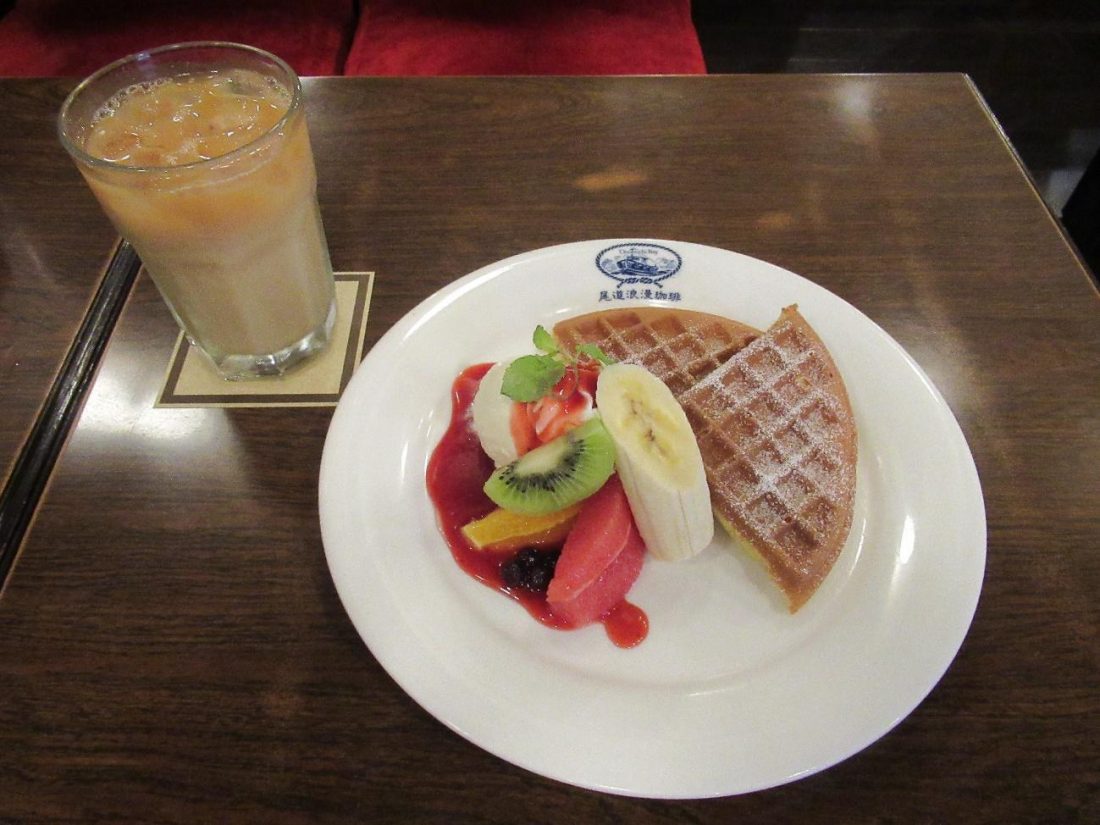
The waffles, made to order, were hot and crisp, while the fruit and ice cream helped cool me down, and when eaten together, no two bites tasted the same. I made sure not to add too much sugar syrup so that I could savor the flavor of the tea, and the tall glass actually lasted quite a while. The entire time I was eating, though, I couldn’t take my eyes off of the apparatus the staff use to brew coffee and tea, and after I finished my food and drink, I asked to be moved to the counter where I could see the process up close. The server first puts the coffee or tea into the top container, adds water, mixes the solution, and lets the finished product drip into the container below. The entire process takes about a minute, but I was so engrossed that I watched this lady make coffee and tea multiple times before I finally paid and left the café.
My full belly made me a happy camper, and I began to backtrack towards Onomichi Station. The city of Onomichi seems to go to sleep at around 5:00 pm, regardless of seasons or days of the week, and something about these quiet shopping streets full of closing stores made me want to call it a day too, but not without seeing the Seto Inland Sea one last time. I made my way to the harbor right across from Onomichi Station and stared into the vast blue, and I was reminded of a excerpt from a book that was on a statue right outside Onomichi Hondori.

“I could see the sea. I can see the sea. It’s been five years, but Onomichi’s sea brings back memories.”
This passage was written by Japanese author Fumiko Hayashi in her first work, Diary of a Vagabond. As I had been to Onomichi multiple times, staring at the sea here also evoked memories of past trips for me, inciting a warm, fuzzy feeling of nostalgia. Clouds were forming in the late afternoon and it was starting to rain again, but my mindset remained sunny as I returned to Home Sweet Hiroshima.
Some days later, I crossed paths again with some of the people I believed to be the source of my stress, but the air between us was different this time, and I harbored no more hard feelings toward them, making me realize that none of my problems were personal in the first place. It’s the simple reality that I, like most working people, would benefit from the occasional vacation out of town, and Onomichi certainly did well for my mental health. I urge anyone who has been busy or stressed recently to leave their normal lives behind, even just for an afternoon, and find a calm place where life slows down, healing the body and mind. If you’re ever in the Hiroshima area and yearn for some additional internal peace, Onomichi’s temples and seaside promenade may be the remedy you need.

